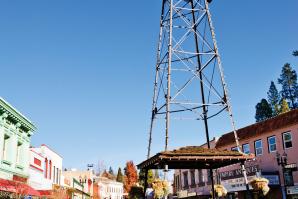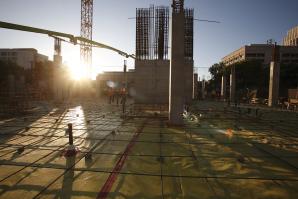Kathilynn Carpenter, executive director, Sunrise Marketplace

In 1999, with the opening of the Galleria at Roseville looming, property owners in what is now the Sunrise Marketplace were having an uncomfortable sense of déjà vu.
Many of them could remember when Arden Fair expanded and the impact it had on their businesses, and a new high-end mall closer to home posed a similar, and bigger, threat.
The city of Citrus Heights was freshly incorporated with a new city council and government to help businesses remain competitive. Many of those first leaders were familiar with Property and Business Improvement Districts and eager to implement them in the city limits.
The result was Sunrise Marketplace, which officially launched in 1999 and has since been renewed for two five-year terms, most recently in 2009 on a vote of 92 percent in favor of the renewal.
“The focus of our first years was all about creating an identity and a sense of place,” says Kathilynn Carpenter, who has served as the organization’s executive director since its inception. “Implementing that vision was made possible by the property owners’ [willingness] to invest more than $2 million in the effort and by our city leaders who, along with Congressman Doug Ose, were able to leverage that commitment into $3 million in additional federal funds.”
That influx went directly into branding the area through signage, street improvements, beautification programs and marketing to retail consumers.
In a recent survey, more than 85 percent of respondents indicated a strong awareness of Sunrise Marketplace as a location. Considering the baseline awareness in 1999 was zero, one could argue the only way to go was up, but that could undercut the real story of what the PBID has accomplished. Sunrise Marketplace encompasses a 10-block area that includes some of the busiest thoroughfares in the region: Madison Avenue, Greenback Lane and Sunrise Boulevard. In addition to Sunrise Mall and Marketplace on Birdcage, the district’s 500 businesses are spread throughout several smaller neighborhood centers including Alta Sunrise Plaza, Fair Oaks Plaza, Greenback Square and Sunrise Village, among others. Rallying these competing businesses to co-promote was a significant achievement. Even today, Sunrise Marketplace is one of the few shopping spots in the country where the store directory includes retailers across the street.
“Having those major retail centers all together to work cooperatively at a single table was truly remarkable,” says Gloria Wright with Inter-Cal Real Estate, who served as the organization’s board chair from 1999 to 2001, and again from 2008 to 2010. “To have these visionaries all moving forward together was a grand indication of what we could accomplish.”
As the economy and market forces have changed since 1999, so have the district’s priorities.
“We were seeing trends like longer than usual vacancies that suggested things might be slowing down in the economy,” Carpenter says. “We started a visioning process, which ultimately guided us into putting more focus on economic development.”
One major outcome of that process has been the Locate in SMP project, which promotes leasing opportunities, offers market information and serves as a resource for bringing more businesses into the district. Much of this information can be found at locateinsmp.com.
“There have been challenges. With no land to expand and few easy opportunities for growth, we’ve had to work harder than outlying areas like Rocklin, Folsom and Elk Grove, but we’ve held our own,” Carpenter says. “The economy being what it is, our message of value, convenience and variety has been important to consumers these past few years.”
A significant change has been the move into efforts that will drive people into the stores and not just through the shopping center doors. Carpenter is exploring options to reinvent the district’s website and implement social marketing strategies to inform consumers of store promotions, discounts and upcoming events. At the same time, members will benefit from online courses on everything from how to recognize counterfeit money and prevent shoplifting to compliance with the Americans with Disabilities Act, implementing a recycling program and how to apply for revitalization grants.
Today, as retail begins to show signs of renewed life, Carpenter is optimistic for the future, while recognizing that the things that make Sunrise Marketplace successful are, in the end, fundamental.
“We’ve always had a group of property owners who see the value of the district and work actively to participate in it,” she says. “And we have a wonderful relationship with our city partners in the police department and city government from the top down. Those two things may not be the only reasons for our success, but there’s no question we wouldn’t be as successful as we are without them.”
Recommended For You

Up & Down Main Street
Small town realities and the long road to prosperity
Say what you will about the severity of state and federal budget woes, but it’s arguably the small towns that are bearing the real brunt of today’s economy.

In a Material World
Predicting project costs to stay competitive
During the building boom, contractors had to keep a sharp eye on the rising cost of materials if they wanted to make a decent profit. From 2004 to 2008, double-digit increases were the norm for many products.


